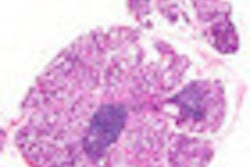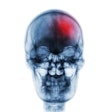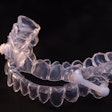A panel of protein and mRNA biomarkers identified by researchers from the University of California, Los Angeles could lead to a simple clinical tool for diagnosing Sjögren's syndrome, according to a study in Arthritis Care & Research (July 8, 2010).
The same research group previously discovered several candidate salivary biomarkers for primary Sjögren's syndrome using both mass spectrometry and expression microarray analysis (Arthritis & Rheumatism, November 2007, Vol. 56:11, pp. 3588-3600).
In the most recent study, the researchers wanted to verify the candidate biomarkers in independent patient populations and evaluate their predictive values for primary Sjögren's syndrome detection. In total, 34 patients with primary Sjögren's syndrome, 34 patients with systemic lupus erythematosus (SLE), and 34 healthy individuals were enrolled in the validation studies. Salivary protein biomarkers and mRNA biomarkers were measured in all patients.
The researchers found that three protein biomarkers -- cathepsin D, alpha-enolase, and beta-2-microglobulin -- and three mRNA biomarkers -- myeloid cell nuclear differentiation antigen, guanylate binding protein 2, and low affinity IIIb receptor for the Fc fragment of IgG -- were significantly elevated in patients with primary Sjögren's syndrome compared to both SLE patients and healthy controls.
"We have successfully verified a panel of protein and mRNA biomarkers that can discriminate primary Sjögren's syndrome from both SLE and healthy controls," the researchers wrote. "If further validated in primary Sjögren's syndrome patients and those with sicca symptoms but no autoimmune disease, these biomarkers may lead to a simple yet highly discriminatory clinical tool for diagnosis of primary Sjögren's syndrome."
Copyright © 2010 DrBicuspid.com



















